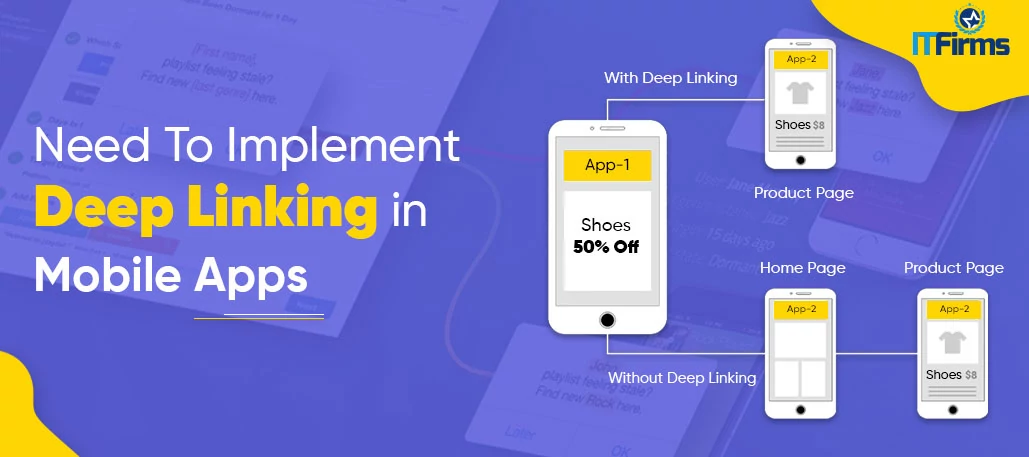
Need to Implement Deep Linking in Mobile Apps
Does your business depends upon search traffic from Google? Worried about the competition in search results? Check how Universal App Links or deep links come to rescue!
Mobile App Deep Linking makes use of a uniform resource identifier that links to a specific location within a mobile app rather than simply launching the app. Deviating a bit, deferred deep linking and contextual deep linking go a step ahead allowing users to deep-link to content even if the app is not already installed on mobile device.
Deep linking sends the users to a specific point in the mobile app rather than any external website or the app homepage.
Categorizing Mobile App Deep Linking
Deep Linking in mobile apps can be realized in three different ways:
- First is a standard way in which the user searching on a mobile browser is directed to the particular item within the app installed in their mobile device. If the app is not installed, an error page might occur.
- Second is deferred deep linking in which the user is directed to specific content. Here the user is redirected to the specific item within the mobile app installed on their phone. If the app is not installed, the re-direction link will take them to the Play Store or App Store listing of that app.
- The third is contextual deep linking which is a summation of above two types of deep linking and allows for more precise tracking and better relevancy to users. This approach comes out to be more useful for both developers as well as users, as these links pass data to an app through the install and allow personalized onboarding along with better attribution.
Which content can be linked-to with deep linking?
Deep linking is particularly suitable for retail and e-commerce apps. As users look for any item on the web browser, they are automatically redirected to that specific item in the app. Retail apps can deep link to the shopping carts. This helps them go for purchasing the items they once abandoned or saved for later. A similar thing goes with travel apps who redirect or deep link users to promotional pages such as flight sale. News apps deep link or redirect the users to trending content or breaking news.
Marketers can send push notifications by deep linking their apps with the pages usually browsed by users. This helps them promote and advertise new content or app updates. This prevents the need for the users to forcefully click on any link, or navigate to the new changes alone. Push notification can be sent along with new app features. A pair of a short string of in-app messages can also be considered as an idea.
- Web2App – As a user clicks the map in Google local results it directly opens the Google Maps app
- Mail2App – As a user clicks a content in an email from LinkedIn it directly opens the LinkedIn app on that content
In Conclusion
Standard deep linking isn’t a hurdle in user engagement anymore. Going forward, App Development Companies India have adopted deep linking in their Android and iOS apps for more than one reasons. Deferred and contextual deep linking helps improve user retention, engagement, and mobile app usage. It has been critical in converting user-onboarding into user re-engagement. Deep linking is highly preferred by application development companies as it makes the apps discoverable in search results. Google indexes mobile app deep links. This makes the content to show up in search engine page results just as a website would. This increases traction by new users. Deep links pass data to and fro across applications, a website to app, app to app, social media to an app, search results to apps, advertisements to apps, email to apps, SMS to apps and likewise. This is useful for users to predict as to which campaigns and sources are most successful in driving engagements and app downloads accurately. Is it due to deeply linked advertisements? Email or SMS? Or social media? Or referrals? – Almost all sources attribute well with deep linking.
